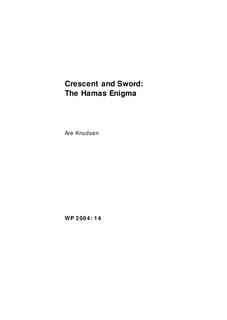| dc.description.abstract | This paper analyses the popular support to Hamas, the most
important of the Palestinian Islamist movements today. The
paper charts the movement’s historical ascendancy from a
fringe Gaza-based group to a mainstream Islamist movement
and mouthpiece for dispossessed Palestinians. Since 2001,
Hamas’s leadership has come under increasing attack from
Israel, killing a number of the movement’s leaders and senior
members, most prominently Sheikh Yasin, the movement’s
founder and spiritual leader, and his successor as Hamas
leader, Abd al-Aziz Rantissi. Nonetheless, Hamas’s duality as
“worshippers” and “warmongers” has made the organisation
extraordinarily popular among dispossessed Palestinians and a
mounting political challenge to the secular nationalism of the
PLO. At present, two-thirds of the Palestinians live below the
“poverty line” and it is likely that it is in this disenfranchised
segment of the population that Hamas finds its core support.
Presently, about one in every six Palestinians in the Occupied
Territories benefits from support from Islamic charities.
Hamas, on its part, allocates almost all of its revenues to its
social services, but there is no evidence that Hamas or the other
Islamic charities provide assistance conditional upon political
support. | |
